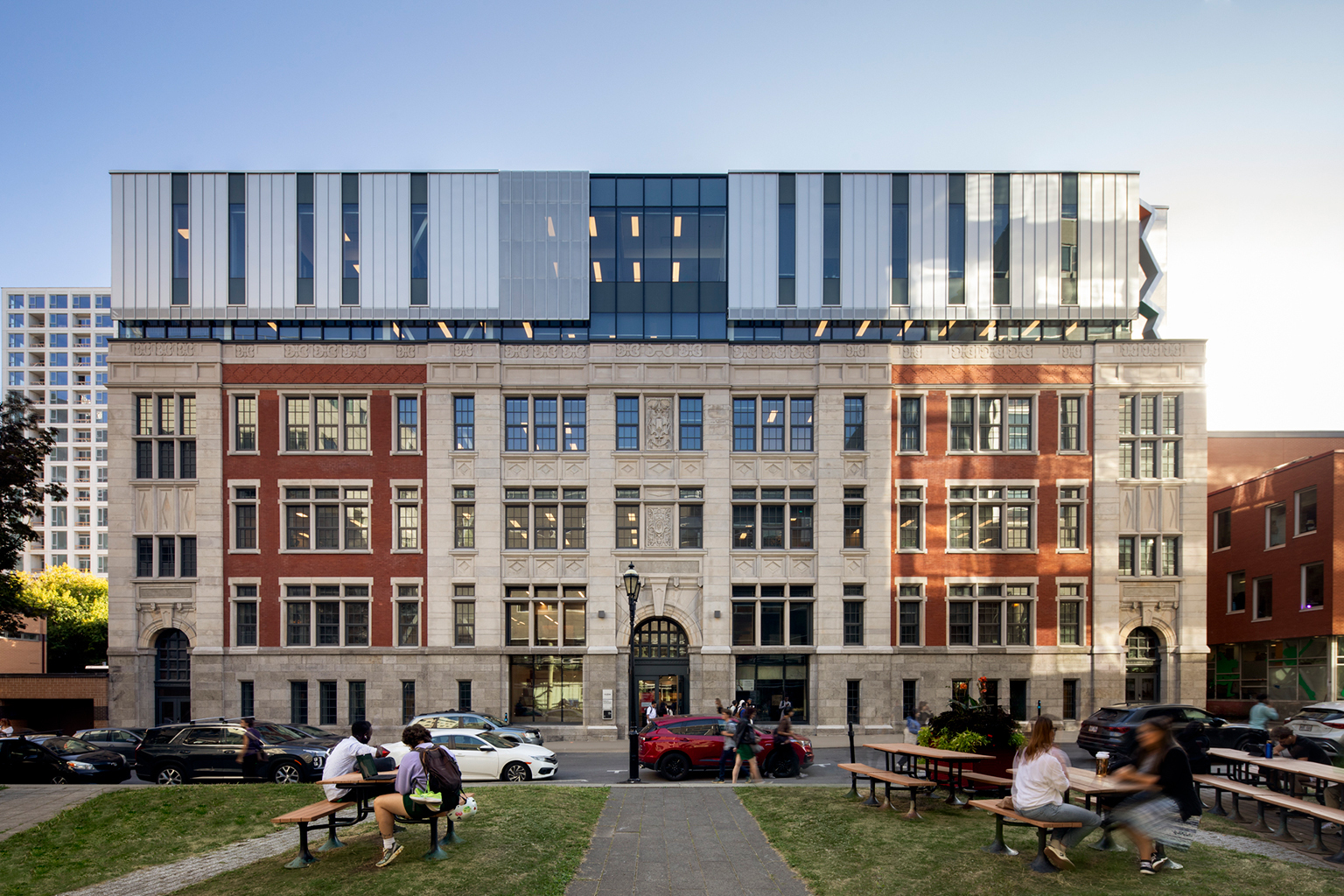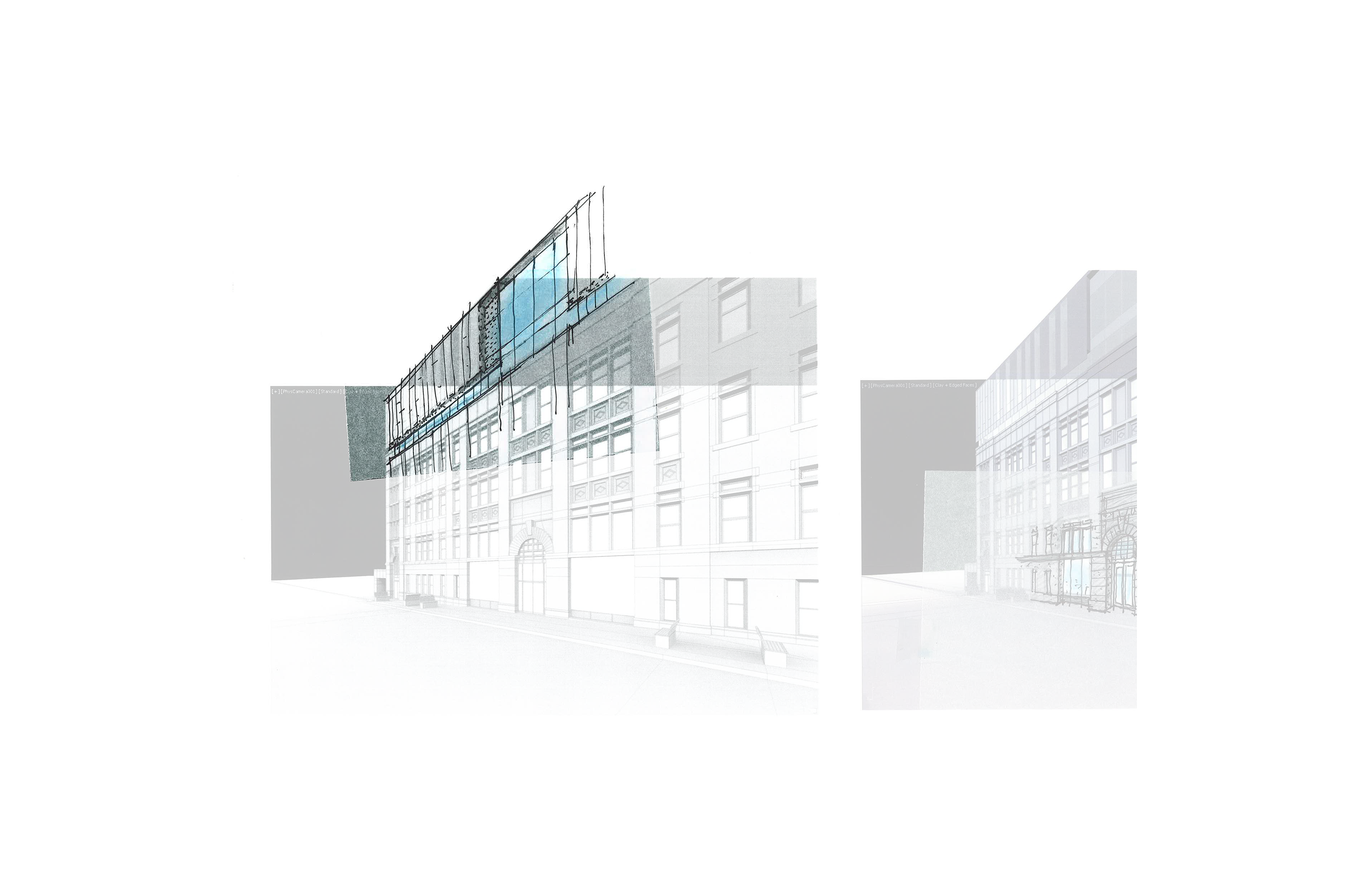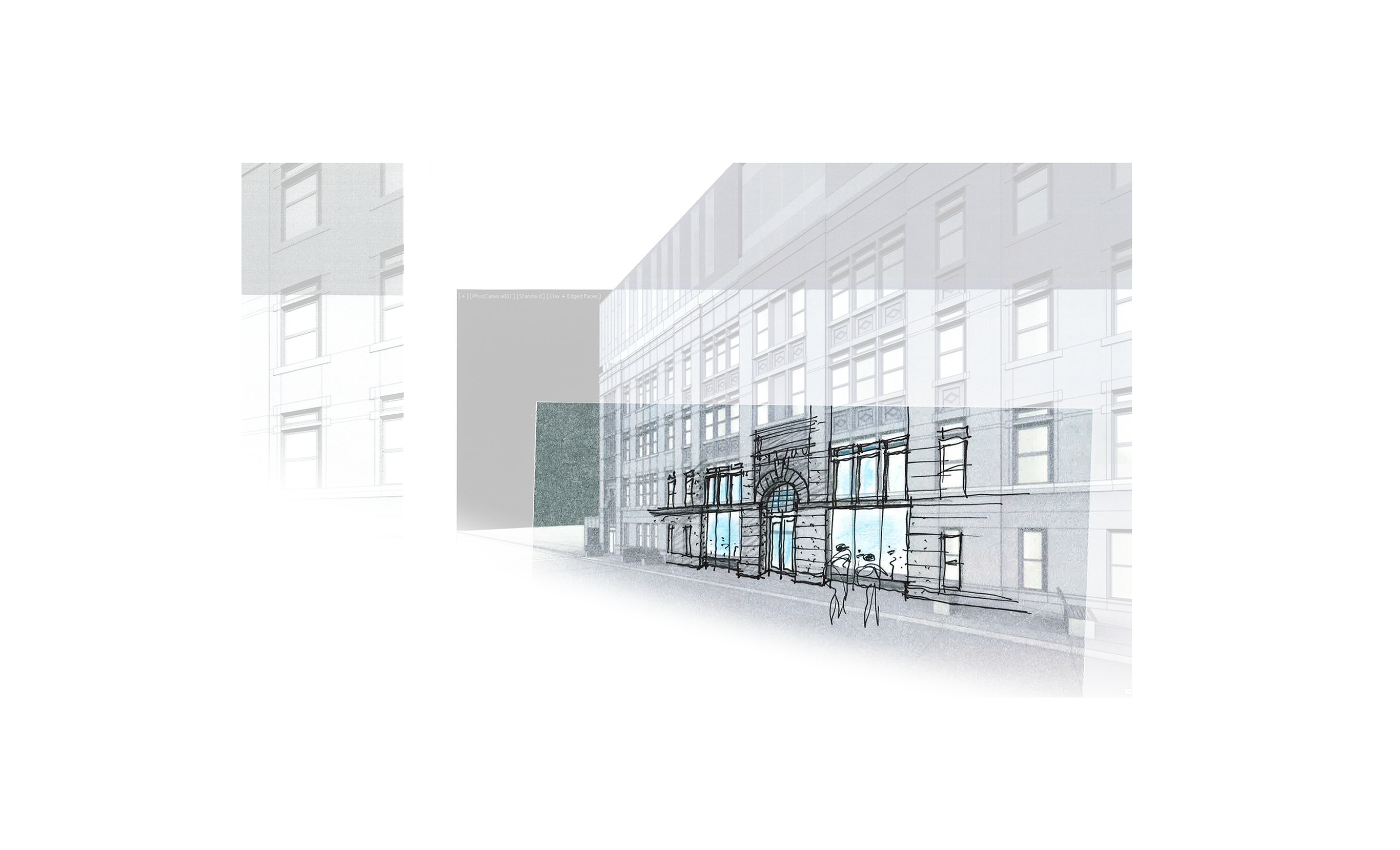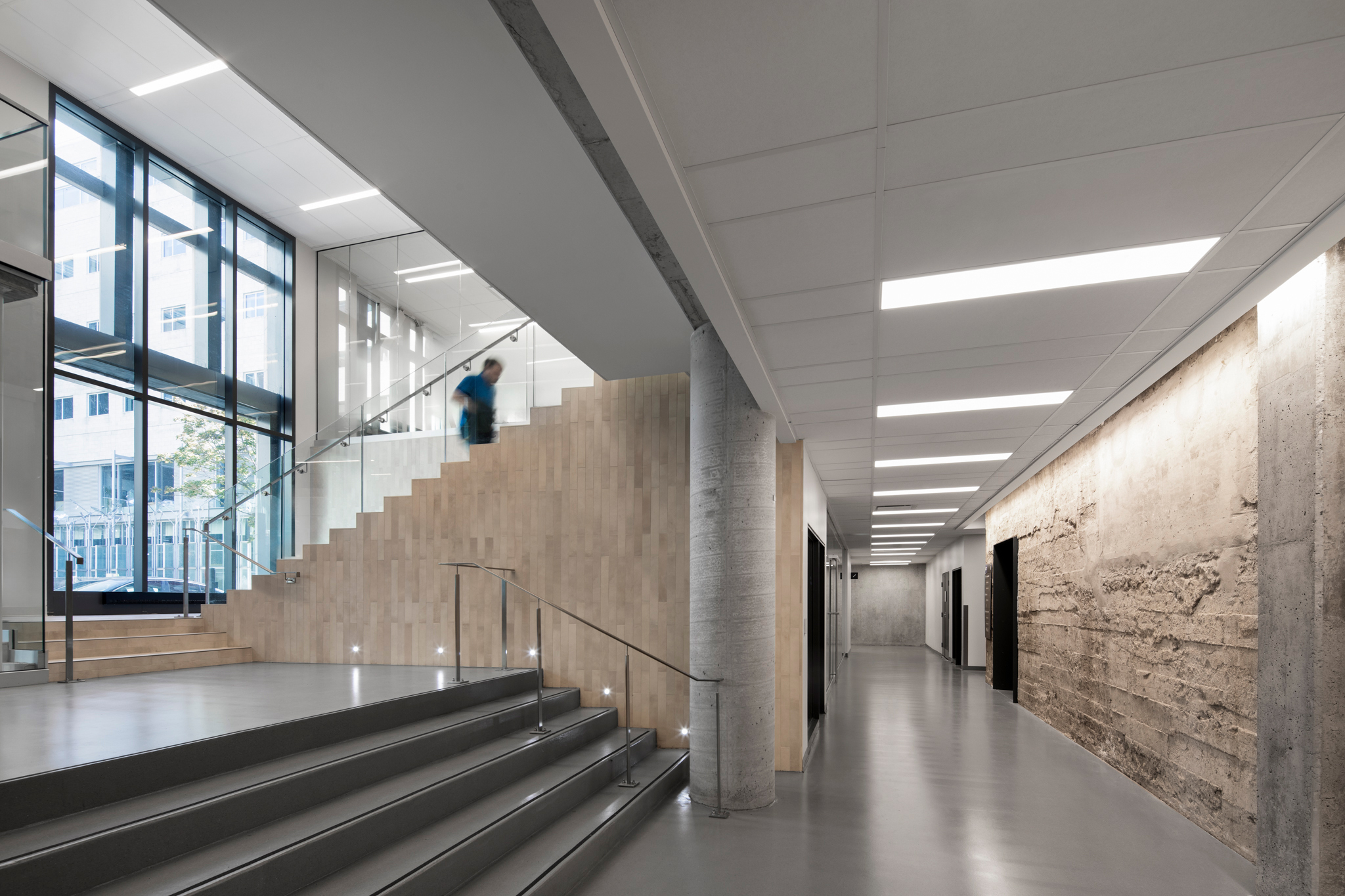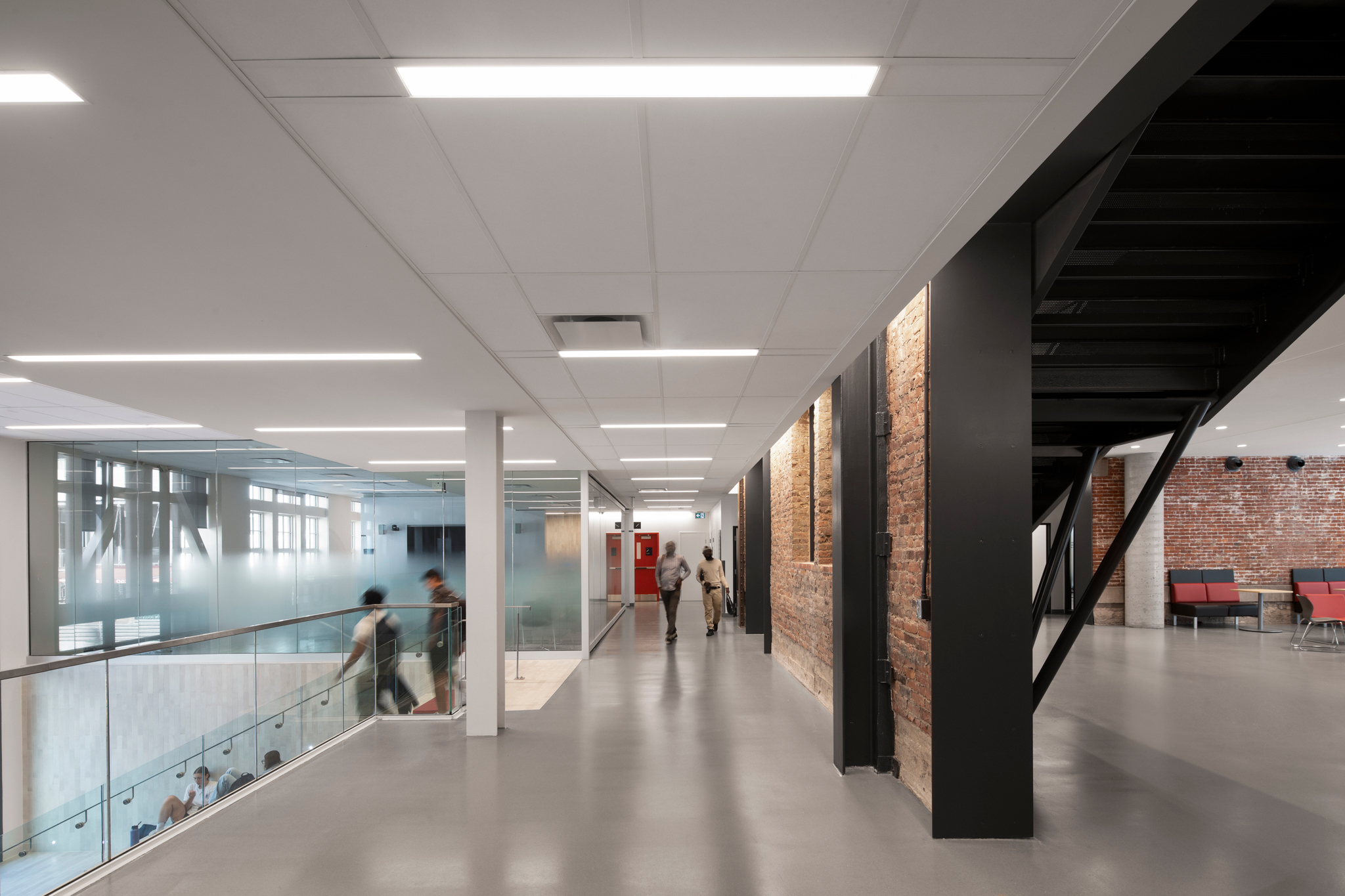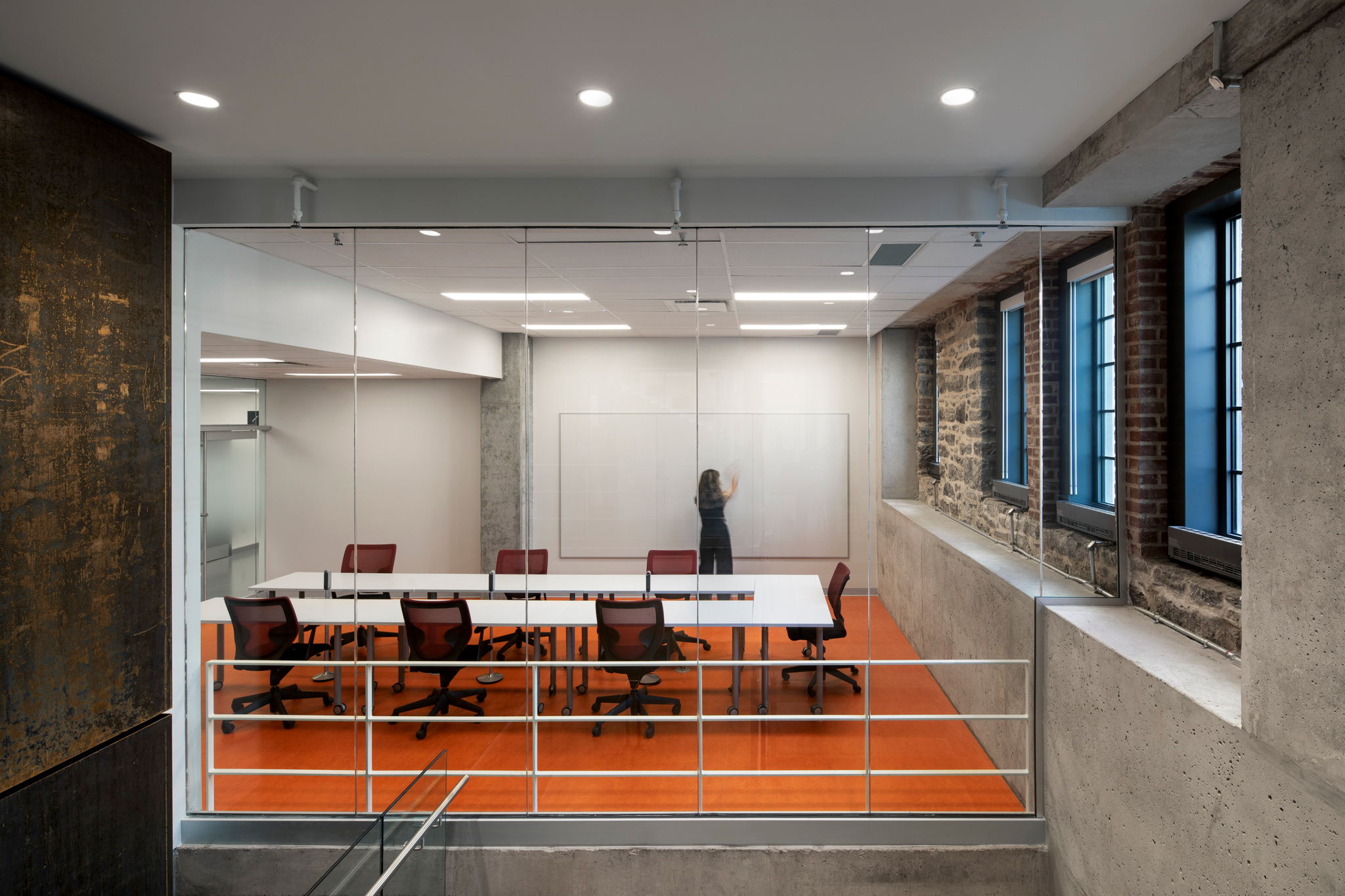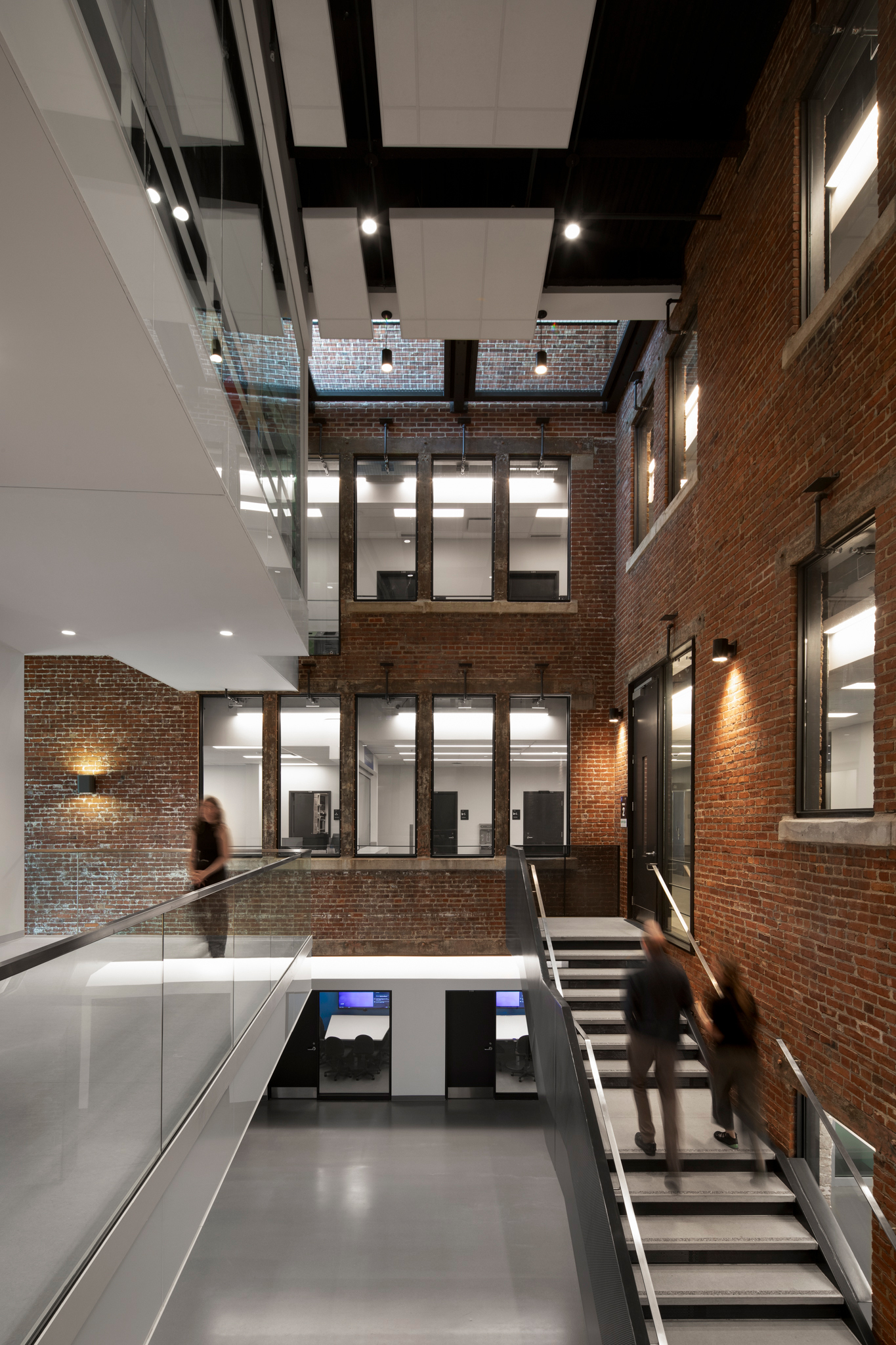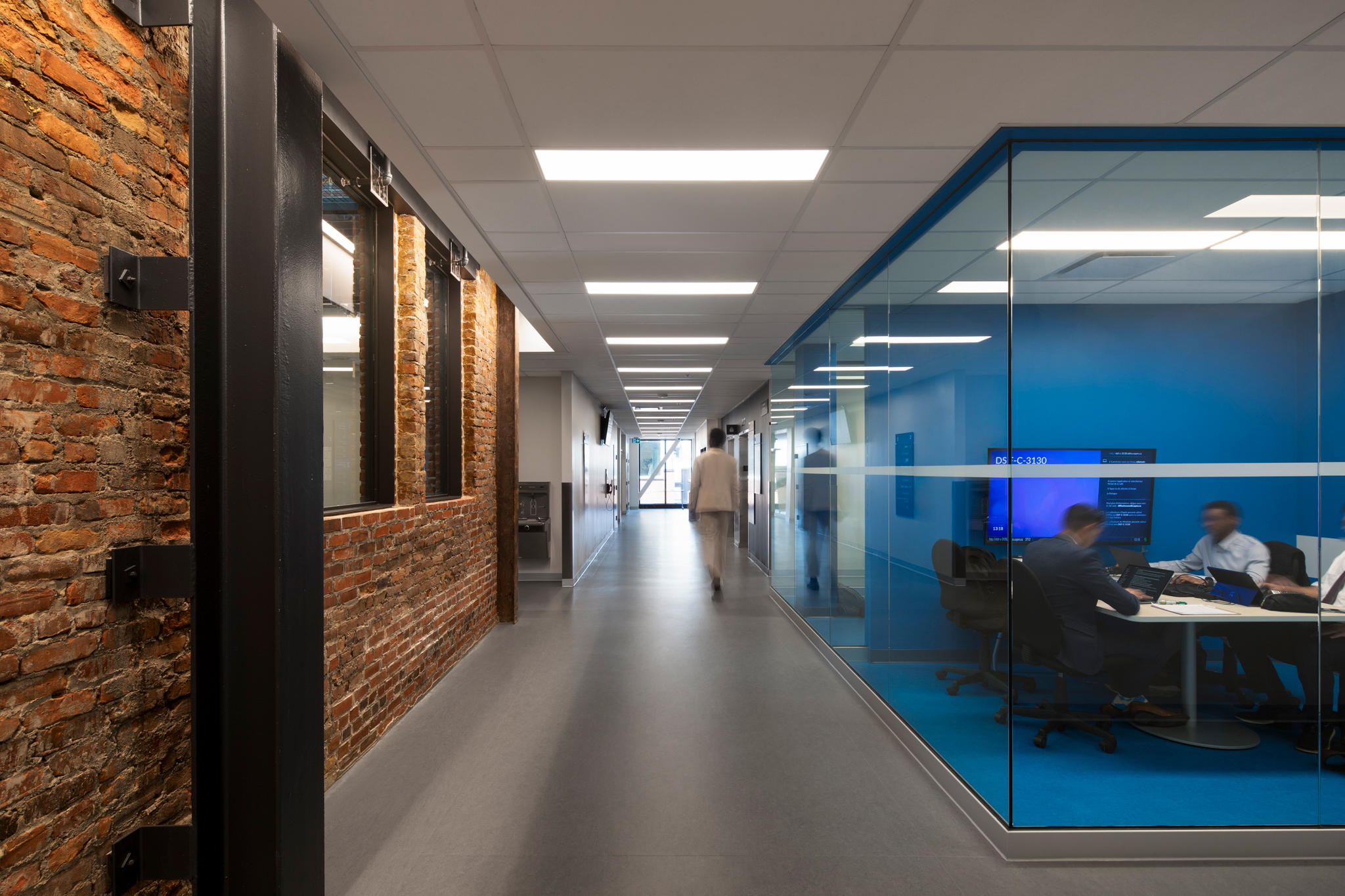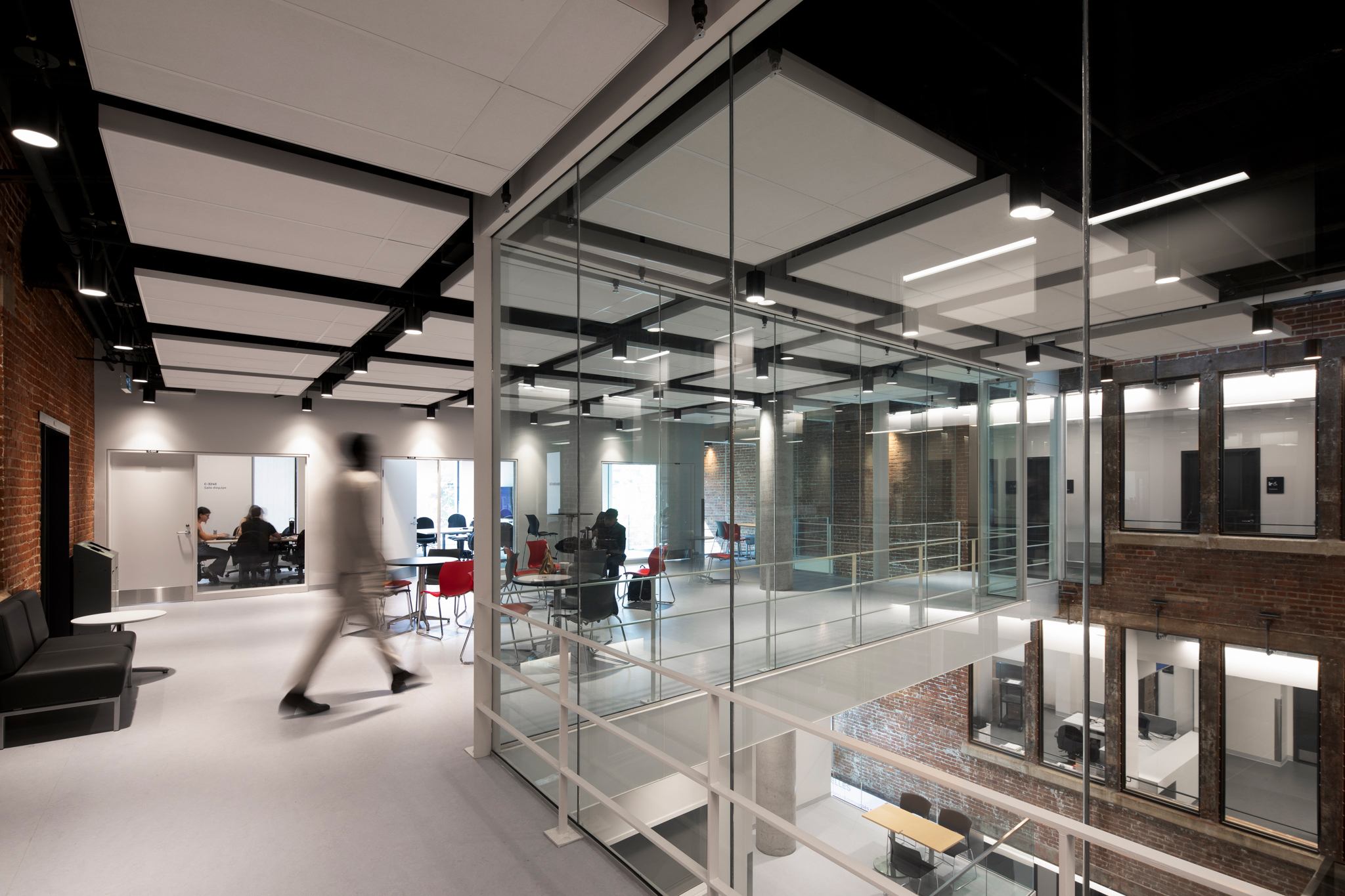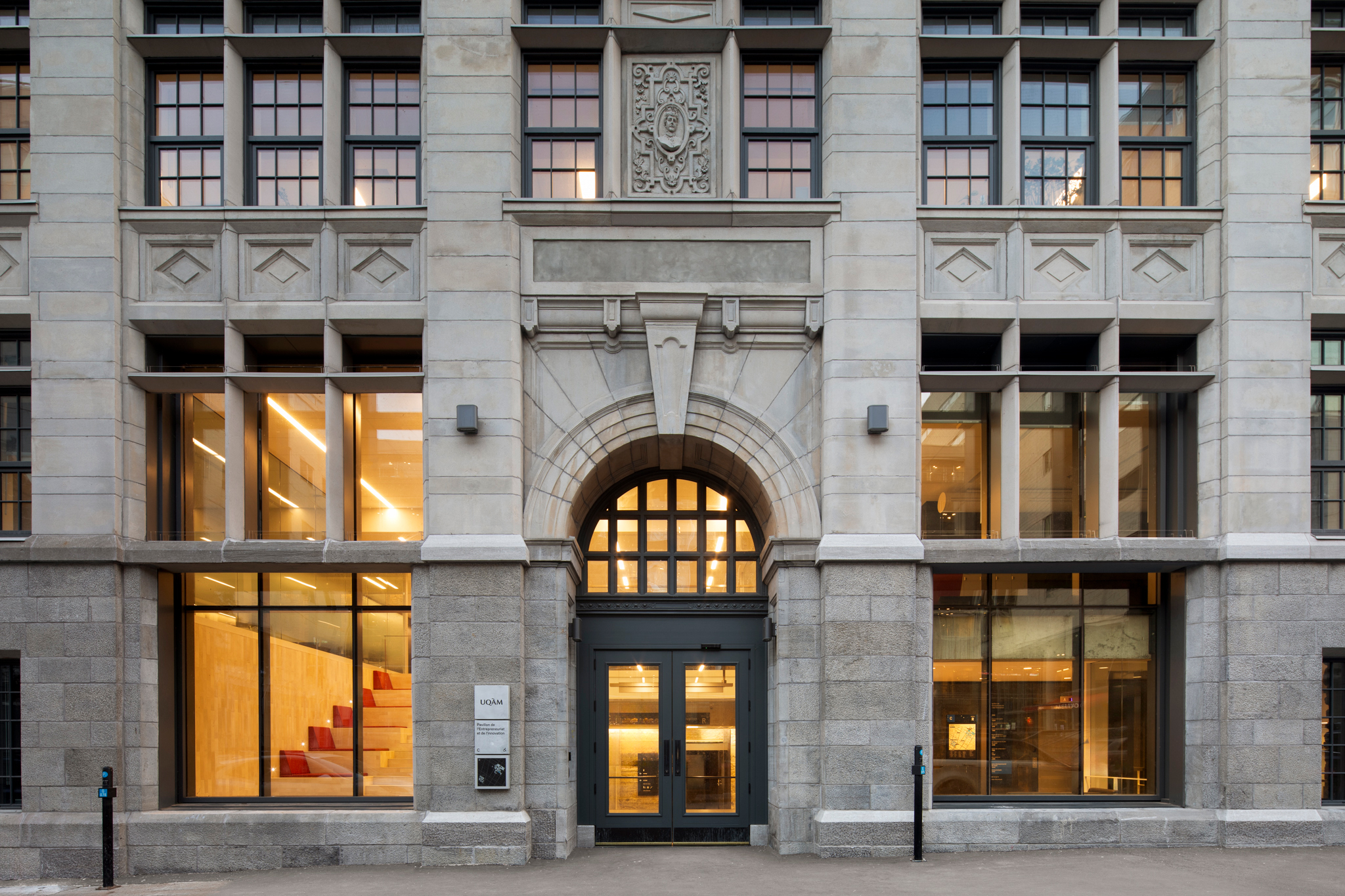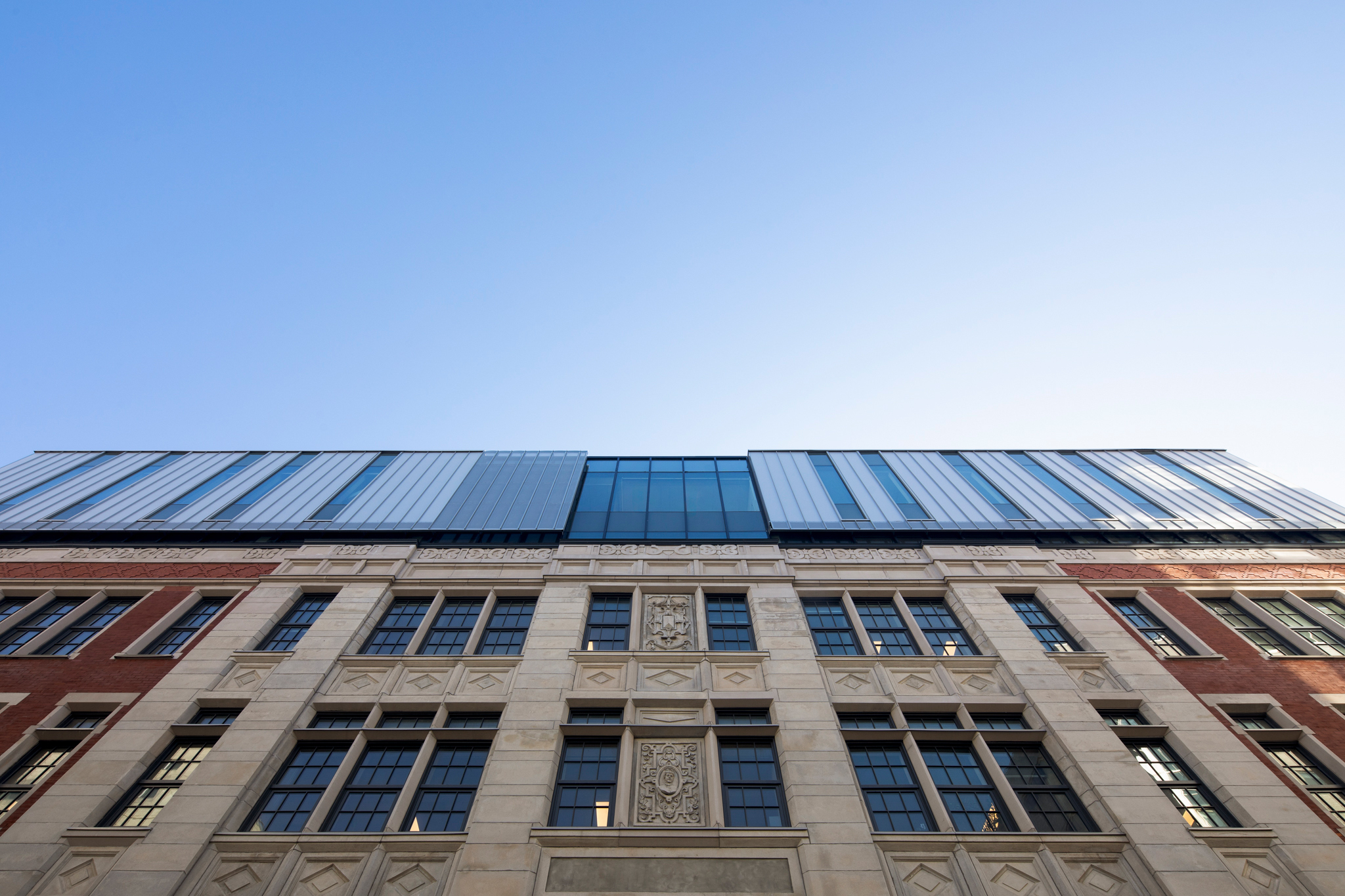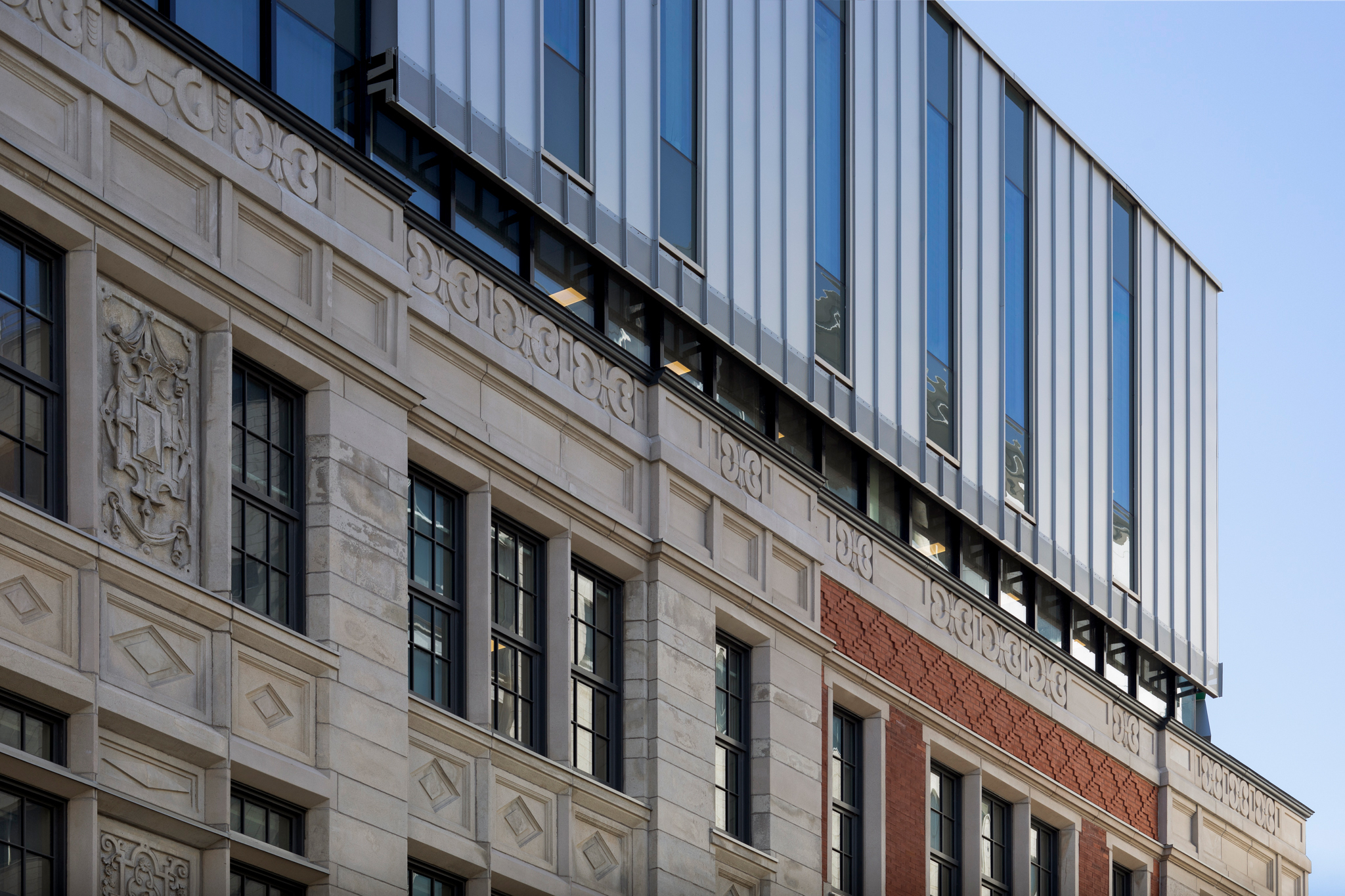Entrepreneurship and Innovation Pavilion of the Université du Québec à Montréal (UQAM)
Located at 1250 Sanguinet Street, the new Entrepreneurship and Innovation Pavilion of the Université du Québec à Montréal (UQAM) is part of an urban revitalization initiative for the Quartier Latin, strengthening the vitality of downtown Montreal.
The new pavilion is comprised of the existing heritage Alexandra School building, which has been identified as a building of heritage and architectural value by the City of Montreal and rehabilitated as part of the project. It incorporates an infill of its courtyard, creating a contemporary architecture bathed in natural light.
Built in 1910 according to the designs of Alexander Francis Dunlop, this building features a significant public facade. Its main qualities lie in its decorative precast concrete elements, particularly evident in the treatment of the window openings and ornate entrances.
The architectural proposal is articulated in a tripartite installation. The original building, with its neo-Tudor façade, confirms its prominence and dominant character with a cut stone and a building body clad in an assembly of brick and artificial stone. This ensemble is now accompanied by a new crown composed of a contemporary architecture that is open and porous.
The differentiated architectural languages, harmonious in their dialogue, signal the new status of the place. Thanks to its contemporary two-story vertical expansion, the building can now welcome 1,500 people in its learning and collaborative spaces, equipped with the finest audiovisual equipment.
The heart of the building, a vast luminous common space, is surrounded by the walls of the former schoolyard and illuminated by a light well that connects all five levels. The legibility of the architecture is at the core of the approach, as it is fundamental to allow users to see and understand the spatial organization of a building.
$36M
NFOE
The project includes upgrades and practices to support the building’s sustainability and its goal of LEED certification. These include the improvement of the existing building’s envelope efficiency and performance, addition of heat recovery in winter, and protection from glare and overheating in summer. A landscaped rooftop terrace and a generous lantern skylight enhance the experience of the spaces by connecting interior to exterior and bringing abundant natural light to the heart of the building.
The selection of local materials and the specification of low-energy-impact processes further contributes to meeting the project’s high sustainability standards.



